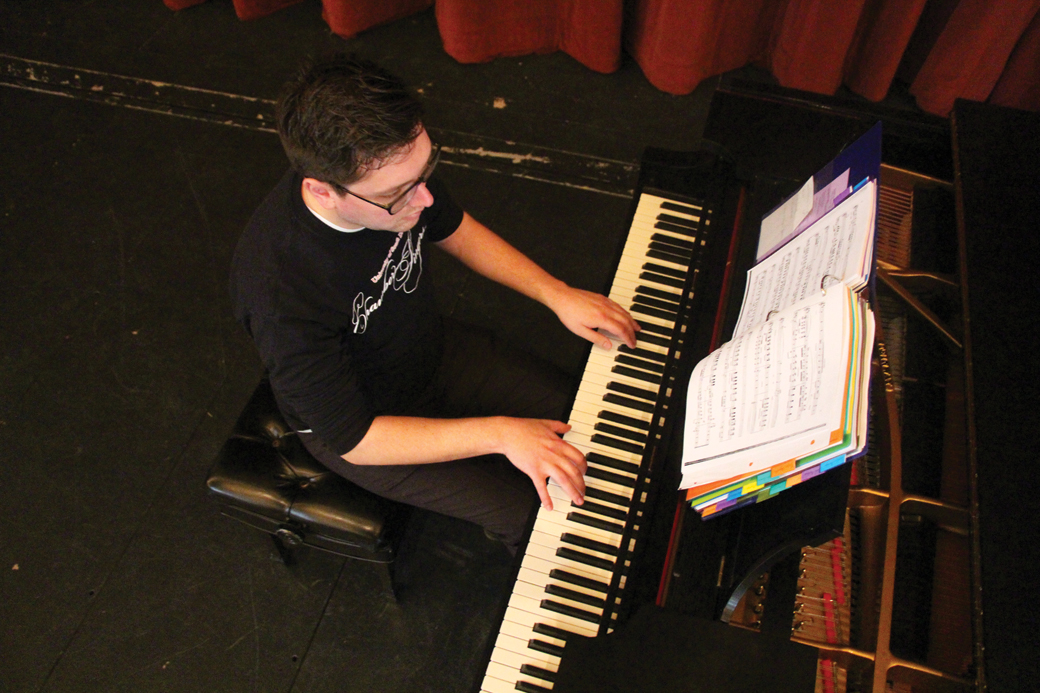
Musicians struggle with performance injuries
Partway through playing a three-hour piano accompaniment for the University of South Dakota’s production of “Les Miserables”, graduate student Chris Larson knew something was wrong.
“It was a stabbing pain,” Larson said.
Last semester, Larson had an MRI on his arm which revealed a genetic and benign tumor. Now the tumor is large enough for Larson to feel when he touches his arm.
“They thought it was a cyst,” Larson said. “That would be preferable.”
Larson attempted remedies for the pain in his left arm, including stretching his arm and alternating heat and cold.
“I was just trying to get through it,” Larson said. “I was just hoping my hand would work.”
Although Larson was born with the tumor, it wasn’t until intense piano work it became inflamed and began causing intense pain. At times, the tumor pinches the muscles in his hand and causes his fingers to involuntarily twitch.
“That would be bad if I start playing a song and I twitch and hit the wrong note,” Larson said.
Larson has since cut back on the time he spends playing the piano until he has surgery to remove the tumor over the summer. The delicate surgery involves peeling away layers of the tumor until it is removed from the nerve.
Larson will be unable to use his hand for two weeks, and it could take three months for him to regain total feeling in his hand.
“It’ll be kind of interesting to see what my hand can do,” Larson said.
Richard Rognstad, a music professor at USD, said he has seen five promising high school students have to discontinue music careers due to carpal tunnel or other related injuries.
“Musicians like to practice,” Rognstad said. “We hate to quit playing.”
However, the drive to continue playing music can lead to more serious injuries. Repetitive motions and unchanging posture can contribute to fatigue and lead to an injury. At times, musicians may have trouble understanding if something hurts due to fatigue or an injury.
“In the case of the students, all of them started having pain and kept playing through it,” Rognstad said.
To help combat the issue of musical related injuries, Rognstad had Kory Zimney, assistant professor of physical therapy, spoke to high school students during the Spring Orchestra Concert March 7.
Zimney spoke to students about taking frequent breaks during practices to change position or posture.
“Prolonged sitting with anything is unhealthy as a whole,” Zimney said.
In addition to taking breaks, Zimney said applying general health principles such as getting enough sleep and eating healthy foods can help prevent injuries. Musicians can also strengthen muscles through training to help decrease muscle fatigue.
Zimney said the arms and hands are the primary risk areas for music-related injuries.
Zimney said some injuries can be overcome through a gradual return to the musical activity.
“Your body always heals itself given appropriate time,” Zimney said.
Alexander Tehnique 101
The Alexander Technique was one of the strategies taught to high school musicians during the Spring Orchestra Concert. Musicians such as graduate student and pianist Chris Larson have recently utilized the technique in an attempt to prevent injuries while playing music.
Benefits of the Alexander Technique:
Used by many musicians to prevent injuries
Aims to prevent Repetitive Stress Injuries
Releases tension in the body
Aims to reduce back pain
Focuses on relaxation

